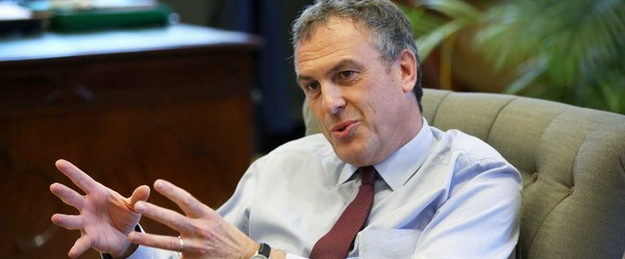Ukrainian President Petro Poroshenko addressed a joint session of Congress, met with Secretary of State John Kerry and later with President Barack Obama in the Oval Office on September 18, 2014. He requested help in arming his troops to battle Russian-backed separatists and Russian servicemen in eastern Ukraine. Poroshenko used a speech to members of the US Senate and House of Representatives to appeal for lethal aid. A major US non-Nato ally status for Ukraine was also discussed. President Barack Obama for now turned down his appeals.
Perhaps it is high time to look closely at Ukraine’s own defense industry? The way out for Ukraine, instead of begging for armaments from the West, is to use economic assistance from the West (a sort-of Marshall Plan) and the country’s own resources to develop Ukraine’s own defense industry (military-industrial complex). Development of the defense industry will allow knock-on development in many adjacent sectors of the economy, and enable the creation of a huge number of jobs. Thus the West, which is not willing to completely break relations with Russia, has the excellent excuse that “Ukraine is arming itself on its own, we have nothing to do with this”. It can only work if efficient anti-corruption measures are introduced in Ukraine.
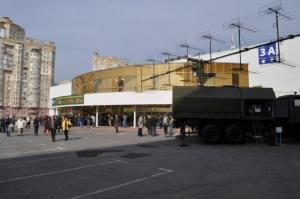
Samples of new arms and military equipment were demonstrated by UkrOboronProm (Ukrainian Defence Industry enterprises joint promotion entity) at the XI International Trade Fair “Arms and Security 2014” and the International Exhibition for Aviation and Space Industry "AviaWorld" held in Kyiv, Ukraine on September 24-27, 2014.
UkrOboronProm enterprises exhibited Ukrainian defence industry products. The enterprises are active in the area of development, manufacturing, sales, repair, upgrading and recycling of weaponry; military and special purpose equipment, ammunitions; and also participation in military and technical cooperation with foreign countries.
ATO (Anti-Terrorist Operation) servicemen, who saw the achievements of the Ukrainian defence industry during the Armaments and Defence 2014 exhibition, looked rather shocked and asked a simple question: “why are all these armaments and weapons produced in Ukraine not supplied in significant quantity to the Ukrainian army and battalions which fight in the ATO in Eastern Ukraine?”
Many required new sorts of armaments were exhibited, such as drones and missiles produced in Ukraine. There are many developments in the Ukrainian defense industry, too large a number to be covered in a blog article. That is why attention was directed to some examples of missiles, high-precision weapons, anti-tank systems and drones so often needed by the Ukrainian army engaged in the ATO.
Some interesting developments which could really be a strong deterrent factor for Russia, such as the Grom-2 (Thunder-2, a tactical missile complex, and Ukraine’s Korshun-2 Mobile Ballistic Missile System, were also demonstrated.
KB Pivdenne [“Yuzhoye”] (Design Bureau South) together with the Pivdenmash [Yuzhmash], manufacturing enterprise in Dnipropetrovsk have developed a new tactical missile complex Grom-2 (Thunder-2). Development of system-missile weapons for the Ukrainian Ministry of Defense remains a key priority and a valuable activity for KB Pivdenne.
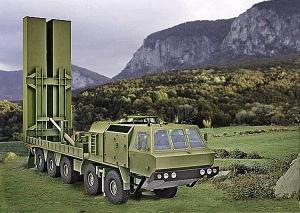
Grom-2 (Thunder-2) is a new tactical missile system developed for the Ukrainian armed forces. It uses a cruise missile developed on the basis of Korshun (Kite) to destroy ground targets. This system forms the basis for other operational missiles with a longer range. In fact, the complex is far better and advanced than its Russian counterpart, the Iskander (Nato designation SS-26 Stone
). Despite little funding in 2009-2013, Pivdenne has developed fundamental solutions to improve the technical characteristics of Grom-2 (Thunder-2) targeting the export market and military-technical cooperation. Further development of the ground forces missile system will allow a unified chain of command to operate independently on the tactical level, but incorporated into a network sharing information from existing ressources as well as newly introduced sources, like unmanned aerial vehicles (UAV, drones) and observation satellite data, thus authorizing strikes at various ranges from a single launcher.
The Ministry of Defense announced on June 26, 2013 that the development of the Sapsan tactical missile system by Pivdenne had been abandoned and completing the development of the Grom-2 (Thunder-2) by Pivdenne was the priority.
![Ukraine Mobile Ballistic Missile System Korshun-2 [Kite-2]](http://euromaidanpress.com/wp-content/uploads/2014/10/image091.jpg)
The maximum range of the Korshun-2 is 280 km for the export version and 350 km for the Ukraine army version. The minimum range is 50 km. The complex will use a cruise missile developed on the basis of Korshun to destroy ground targets.
What is very important is the point that the Korshun-2 complies with the limits imposed by the Missile Technology Control Agreement (no missiles with a range greater than 300 km can be sold on export markets and the missile payload may not exceed 500 kg).
KB Pivdenne also participated in the 65th International Astronautical Congress which was held in Toronto, Canada between September 29 and October 4, 2014. It was organized by the Canadian Aeronautics and Space Institute (CASI) and the International Astronautical Association (IAA).
The anti-tank weapon Skif was demonstrated. Skif is a man-portable antitank missile system designed to destroy infantry positions, stationary and moving modern armoured targets of any type, be it monolithic armour or explosive reactive armour (ERA), as well as targets of interest such as weapon emplacements, tanks in trenches, light-armoured objects and helicopters.
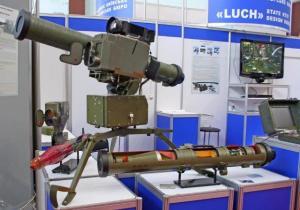
The system’s most intersting feature lies in the possibility it offers to fire missiles from emplacements and shelters (bunkers, buildings) that improve the protection of the operator by diminishing exposure to enemy fire . The system includes 130mm and 152mm missiles in transport/launching containers with tandem hollow-charge warheads (RK-2S, RK-2M-K) able to defeat reactive armours and high-explosive fragmentation warhead (RK-2OF, RK-2М-OF) to engage infantry troops.
The Skif system was developed and manufactured by the Luch State Kyiv Design Bureau (SKDB “Luch”). SKDB Luch was founded in 1965 in the USSR as the main developer of control and fault diagnostic automated systems for special-purpose aircraft equipment.
During its history, the enterprise has developed and put into production more than 40 types of sophisticated scientific products, including automated and automatic control and diagnostics systems of air weapons, electric control actuator units, other systems and high-precision weapons and also systems of testing and management of technological processes in the industry, sophisticated medical equipment and consumer goods.
Products developed by SKDB Luch are successfully exported and sold on the domestic market.
Other products made by SKDB Luch are Corsar, Bar’er (Barrier) and Falarick 105.
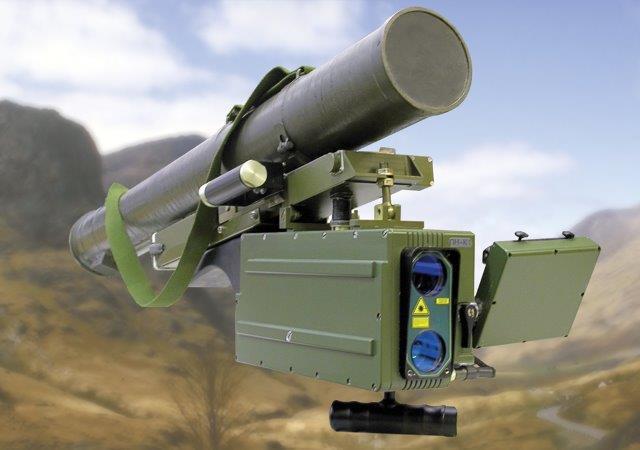
Corsar is a vehicle-carried antitank missile system, a light portable anti-tank missile system intended to destroy stationary and moving targets.
The Bar’er vehicle-carried antitank missile system is mounted on a turret on an infantry fighting vehicle (IFV) or armoured personal carrier (APC) and is designed to destroy stationary and moving targets.
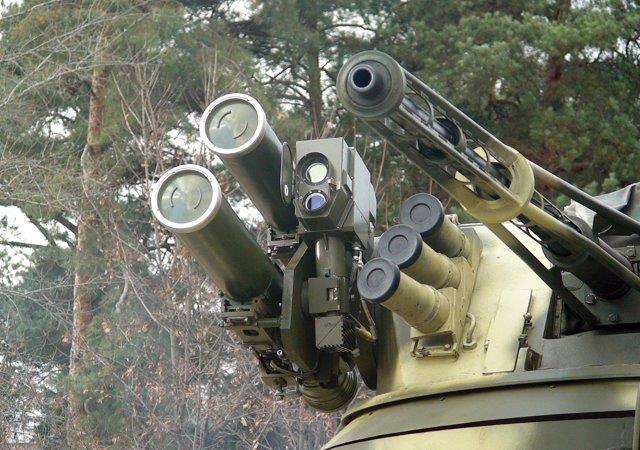
Falarick 105 is an antitank laser beam guided missile fired from the CT-CVTM (anti-tank turret) weapon system against stationary and moving targets, a missile that is fired from a traditional cannon.
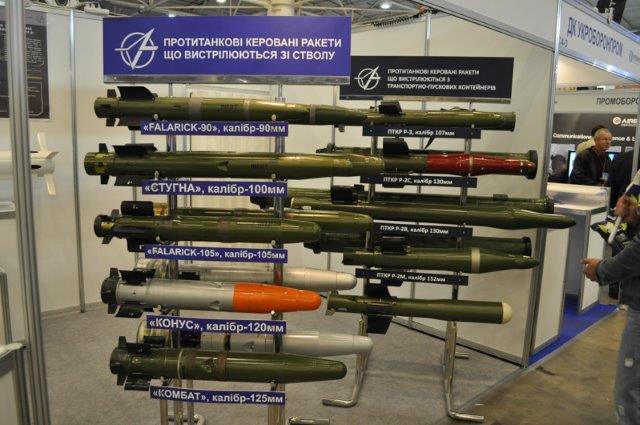
High-precision weapon maintenance is also represented by SKDB Luch: INGUL-A
(system is intended for mainteance control of the “air-to-air” or “air-to-surface” missiles and guided bombs), “GURT-M” system (missiles combat readiness control) and many other systems.

During the exhibition first Ukrainian-made missile system Alta was demonstrated. According to SKDB Luch, Alta missile system is designed to destroy stationary and moving modern armoured targets, boats, small ships and low speed air targets such as helicopters.
Drones or unmanned aerial vehicles (UAV) and systems are represented in UkrOboronProm too: medium-range system Strepet-L and mini UAV system Strepet-LK. The manufacturer is the state enterprise Chuguev Aircraft Repair Plant, Kharkiv Oblast, Ukraine.
Strepet-L and Strepet-LK can be used in the military sphere for close observation and reconnaissance, special operations, low-intensity conflicts, operations in urban areas, escort of convoys, force protection, and battlefield observation. For civilian purposes it can be used for border patrol, law enforcement, emergency situations, protection of strategic targets.
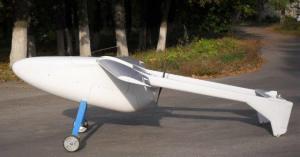
These drones are available and ready to be used by the Ukrainian army.
UkrOboronProm has not announced anything about its plans for delivering new weapons to the Ukrainian armed forces.
Russia has had plans on Ukraine. In December 2013 Russian Vice Prime Minister Rogozin visited Ukraine. As Russia envisaged the share of Ukraine defense enterprises could have increased to 40% by 2020 in Russian army re-armament $700 billion program 2010 - 2020.
Ukraine was needed to successfully complete this rearmament on schedule. If US and EU sanctions subside, no sort of Marshall plan is made available for Ukraine, economic problems growth in Ukraine and after parliamentary elections and local elections in Eastern Ukraine it could be highly probable that supply of armament from Ukraine to Russia would be resumed.
For Ukraine, US and EU, it would be a good option that these Ukrainian facilities be used for the Ukrainian army, thus killing several birds with one stone: not depending on Western arms supply, creating additional jobs, and boosting the Ukrainian economy as sectors adjacent to defense would also benefit. This is also important for the West: a good asymmetric response of the West to Russia, replying to the “polite green men” strategy of Russia with the strategy of arming Ukraine by Ukraine itself, while formally not being responsible for such a process. Better for the Ukrainian defense industry to be focused on its own army and joint projects with the US, EU and Nato and not rearming Russia. Again the key condition is strict anti-corruption measures in Ukraine.
It seems that Ukraine is going in this direction. Ukrainian President Petro Poroshenko said on September 23, 2014 during his first major press conference that Ukraine would increase military spending from 1.02% to 5% of GDP by 2020.
But only Ukrainian efforts will not be sufficient. The issue has been covered by Alexandra McLees, Eugene Rumer Carnegie Endowment in the article “Saving Ukraine’s Defense Industry”. “When the Soviet Union dissolved in 1991, Ukraine was left with about 30 percent of the Soviet defense industry on its territory, including about 750 factories and 140 scientific and technical institutions. At the time of the breakup of the Soviet Union, these institutions employed over 1 million people. In the early 1990s, a number of efforts were made to convert Ukrainian defense industries to civilian production, but they were soon abandoned. Companies that managed to survive became increasingly dependent on contracts from Russia.” Euromaidan Press and Gorshenin Institute
mentioned in earlier discussions that this dependence is mutua,l and that Russians are robbing and removing Ukrainian enterprises located in territory controlled by Russian-backed terrorists supported by Russian troops, as well as taking Ukrainian specialists with them.
“Presently, 300 enterprises, institutions, and organizations employing over 250,000 people are licensed to produce arms and military equipment in Ukraine. Of those outfits, 75 are registered as manufacturers of defense products and services subject to state secrecy, including rocket and missile technology. The state holding company Ukroboronprom, established in 2010, oversees 134 Ukrainian state-owned defense industry enterprises that employ 120,000 workers.”
“The huge industrial complexes in eastern and southern Ukraine are in urgent need of restructuring and modernization. These factories still provide hundreds of thousands of jobs. The possibility of their collapse is fraught with dangerous consequences for Ukraine as well as for US security interests. The damage would likely be felt well beyond the borders of Ukraine, due to the proliferation risks should Ukrainian defense factories lose Russia as a customer. Ukraine needs help. The United States and Europe should spearhead the process toward developing a solution [for saving Ukraine’s defense industry]. Otherwise, the international community may face an even more dire situation in years to come as concluded in this article.”
Written by Dr. Vitalii Usenko, MD, MBA, expert of the Center of Military-Political Studies in the sphere of psychology of communications and by Dmytro Usenko, student at Rotman School of Management, University of Toronto
Expert advice by Edmond Huet, Euromaidan Press armament and military questions specialist, consultant to French TV and radio
Edited by Michael Garrood




